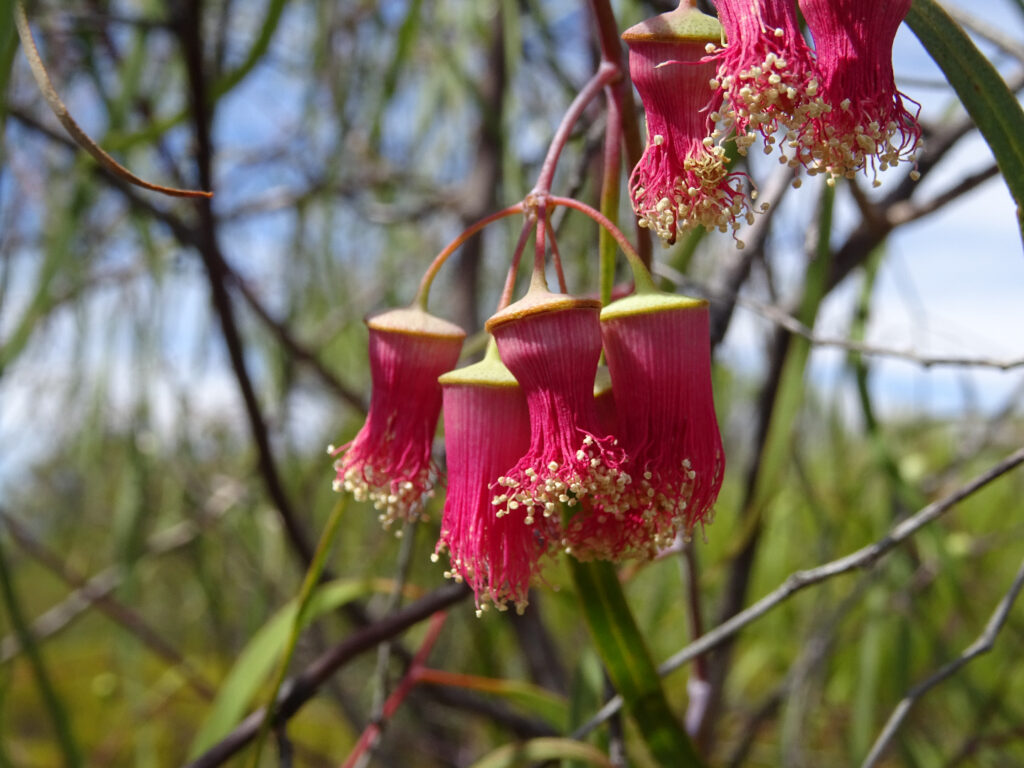Grow a tree in a pot
Action: Grow a tree in a pot
Potted Trees
Newer homes tend towards smaller gardens and courtyard areas. Fortunately, there are many native trees including ‘dwarf’ varieties that are suitable for growing in pots.
Many of our small trees have ornamental foliage and flowers, making them perfect feature plants for courtyards, patios, and apartment balconies.
Small potted trees can bring invaluable nature home as they can attract birds (particularly songbirds and honeyeaters) and pollinators.
Potted plants are also useful for adding greenery in areas of your garden that are close to underground pipes and cabling.
The Colour and the Shape
The use of native trees in pots is popular in landscape design and can be integrated into many garden styles.
Native trees in pots do require more TLC than those planted in a garden.
Supplementary water and occasional light feeding are well worth the return in colourful flowers, interesting foliage, and eye-catching forms.
Size
Theoretically, you can grow just about any plant in a pot, if the pot is big enough and you’re prepared to do the work required to keep the soil healthy.
Many of our small trees and mallees will perform well in a pot, provided with adequate volume for their root system.
The trees recommended for this action will require a large pot with a capacity of at least 75 litres.
Habitat Value: Level 4

Shelter and Food
Potted trees are a great option to establish a leafy canopy in a balcony or paved courtyard, or to grow a species not suitable to the local soil or environmental conditions.
The Level 4 habitat value reflects the high food and shelter value to wildlife.
One advantage of potted trees is their portable nature. They can provide ReWild value to those renting their home who occasionally move house.
ReWild only measures your impact with the resources available to your site – potted trees are a valuable ReWild action when you can’t plant directly into the ground.
NB: Do not include indoor plants as ReWild actions. If the plant can’t be accessed by wildlife, it has no habitat value.
Planting Guide – A Little More T.L.C.
Growing native plants in pots is a rewarding experience and can bring nature home to even the smallest garden, courtyard, or balcony. The only catch is potted plants need a little more attention than their garden cousins.
Ideal growing conditions are detailed on each profile page – check out Jingymia Mallee for example.
Here are tips in keeping native trees happy in pots.
Size matters.
Make sure to choose the right pot for the right tree. Typically, our recommended tree species will do well in pots larger than 75L. The bigger, the better.
A pot that is too small will restrict plant growth over time and result in a sick or dying tree. Root growth can also crack undersized pots.
Check with the nursery about plant and pot selection.
Avoid wet feet.
Our native trees have adapted well to dry conditions and excess soil moisture can result in root rot and encourage other pests and disease.
Good drainage is critical to a healthy potted tree.
The pot should have clear drainage holes and a 10cm layer of free-draining gravel at the base of the pot (underneath the potting mix) to ensure the pot is free-draining.
Pot feet can also assist with healthy drainage.
We recommend a high-quality potting mix specifically designed for native plants.
Avoid completely drying out.
In nature, our native trees have impressive root systems (over 40m deep) to access underground water during times of drought.
Potted trees do not have such luxury and require regular watering to avoid drying out.
Water potted trees deeply once a week during dry weather, or if under cover. During hot and dry conditions, you may need to water every second or third day.
Return nutrients to soils.
Plants in pots are isolated from natural nutrient cycling, and so require annual or 6-monthly application of slow-release fertiliser.
A fortnightly application of seaweed solution can be beneficial in periods of growth or flowering.
Always use fertilisers recommended for native plants.
Banksias and other natives do not tolerate excess nutrients and can result in death or disease.

